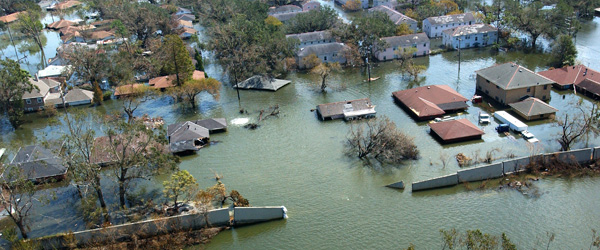Get Ready!
The thought of something "disastrous" happening scares us all. However, the reality is, there is a chance that each of us could be involved in some kind of disaster or emergency. Services such as water, electric, gas, and telephones may be cut off. In the event of a large disaster, emergency personnel will be too busy helping those in need of immediate medical and rescue attention, and unable to assist you.The events of Super Storm Sandy, September 11th, Hurricane Katrina and the tsunami in Japan have affected us all physically, emotionally and spiritually. Therefore, preparation for all types of disasters MUST be a fact of life. Why leave it up to fate and take the chance that you and your loved ones suffer needlessly during and after a disaster?
Having the right supplies on hand is like having a spare tire in the trunk of your car. You hope not to have a flat tire, but it's nice to know that a spare is there, ready to use, and to keep you going. Emergency preparedness is essential in this day and age.
BASIC DISASTER SUPPLIES KIT
A basic emergency supply kit could include the following recommended items:- Water, one gallon of water per person per day for at least three days, for drinking and sanitation
- Food, at least a three-day supply of non-perishable food
- Battery-powered or hand crank radio and a NOAA Weather Radio with tone alert and extra batteries for both
- Flashlight and extra batteries
- First aid kit
- Whistle to signal for help
- Dust mask to help filter contaminated air and plastic sheeting and duct tape to shelter-in-place
- Moist towelettes, garbage bags and plastic ties for personal sanitation
- Wrench or pliers to turn off utilities
- Manual can opener for food
- Local maps
- Cell phone with chargers, inverter or solar charger
Once you have gathered the supplies for a basic emergency kit, you may want to consider adding the following items:
- Prescription medications and glasses
- Infant formula and diapers
- Pet food and extra water for your pet
- Cash or traveler's checks and change
- Important family documents such as copies of insurance policies, identification and bank account records in a waterproof, portable container.
- Emergency reference material such as a first aid book
- Sleeping bag or warm blanket for each person. Consider additional bedding if you live in a cold-weather climate.
- Complete change of clothing including a long sleeved shirt, long pants and sturdy shoes. Consider additional clothing if you live in a cold-weather climate.
- Household chlorine bleach and medicine dropper – When diluted, nine parts water to one part bleach, bleach can be used as a disinfectant. Or in an emergency, you can use it to treat water by using 16 drops of regular household liquid bleach per gallon of water. Do not use scented, color safe or bleaches with added cleaners.
- Fire extinguisher
- Matches in a waterproof container
- Feminine supplies and personal hygiene items
- Mess kits, paper cups, plates, paper towels and plastic utensils
- Paper and pencil
- Books, games, puzzles or other activities for children
Nobody knows when a disaster might strike, but being prepared beforehand can help you and your family survive safely. For more information, go to www.ready.gov.

No comments:
Post a Comment